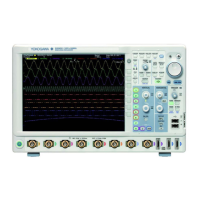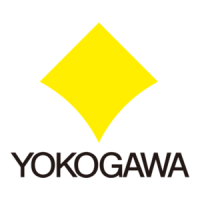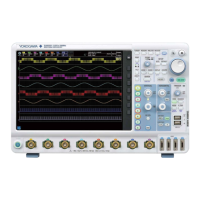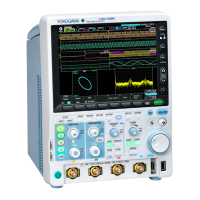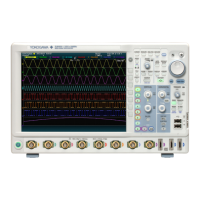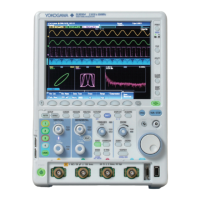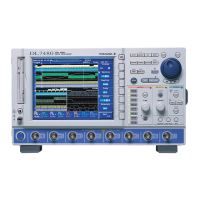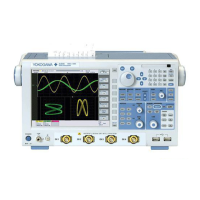5-131
IM 710105-17E
Commands
5
:MEASure:BIT<x>:<Parameter>:{MAXimum
|MEAN|MINimum|SDEViation}?
Function Queries a statistical value of a logic waveform
parameter.
Syntax
:MEASure:BIT<x>:<Parameter>:{MAXimum|
MEAN|MINimum|SDEViation}?
<x> = 1 to 8
<Parameter> = {
AVGFreq|DELay|DUTYcycle|
FREQuency|PERiod|PNUMber
}
Example (Below is an example for the average frequency of
bit 1.)
:MEASURE:BIT1:AVGFREQ:MAXIMUM?
-> :MEASURE:BIT1:AVGFREQ:MAXIMUM 10.0
000E+03
Description If the statistical value is immeasurable, the
DLM2000 returns “NAN” (not a number).
:MEASure:BIT<x>:<Parameter>:STATe
Function Sets or queries the on/off status of a logic
waveform parameter.
Syntax
:MEASure:BIT<x>:<Parameter>:STATe {<B
oolean>}
:MEASure:BIT<x>:<Parameter>:STATe?
<x> = 1 to 8
<Parameter> = {
AVGFreq|DUTYcycle|
FREQuency|PERiod|PNUMber
}
Example (Below is an example for the average frequency of
bit 1.)
:MEASURE:BIT1:AVGFREQ:STATE ON
:MEASURE:BIT1:AVGFREQ:STATE?
-> :MEASURE:BIT1:AVGFREQ:STATE 1
:MEASure:BIT<x>:<Parameter>:VALue?
Function Queries an automatically measured value of a
logic waveform parameter.
Syntax
:MEASure:BIT<x>:<Parameter>:VALue? [{
NRf}]
<x> = 1 to 8
<Parameter> = {
AVGFreq|DELay|DUTYcycle|
FREQuency|PERiod|PNUMber
}
<NRf> = See the DLM2000 Features Guide for
this information.
Example (Below is an example for the average frequency of
bit 1.)
:MEASURE:BIT1:AVGFREQ:VALUE?
-> :MEASURE:BIT1:AVGFREQ:VALUE 10.000
0E+03
Description If the value is immeasurable, the DLM2000
returns “NAN” (not a number). The “<NRf>” at the
end is used to specify what parameter value to
query. It indicates the order of the parameter value
since statistical processing began. If the specified
parameter does not exist, the DLM2000 returns
“NAN” (not a number).
• You do not have to enter a value for <NRf> for
statistics other than the period. If you do not
enter a value, the most recent history parameter
value will be queried. If you enter a value
for <NRf>, the order starts with the newest
waveform in the memory and increases as the
waveform parameter values get older.
• You do not have to enter a value for <NRf>
when cyclic statistical processing is finished. If
you do not enter a value, the parameter value
within the period that was measured last will
be queried. If you enter a value for <NRf>, the
parameter value within the period that was
measured <NRf> times after the measurement
shown on the screen left edge will be queried.
:MEASure:BIT<x>:COPY
Function Copies the on/off status of all measurement items
of a logic waveform to all other waveforms.
Syntax
:MEASure:BIT<x>:COPY
<x> = 1 to 8
Example
:MEASURE:BIT1:COPY
:MEASure:BIT<x>:DELay?
Function Queries all of the settings for measuring the delay
between channels of a logic waveform.
Syntax
:MEASure:BIT<x>:DELay?
<x> = 1 to 8
:MEASure:BIT<x>:DELay:MEASure?
Function Queries all of the settings for a source waveform
for measuring the delay between channels of a
logic waveform.
Syntax
:MEASure:BIT<x>:DELay:MEASure?
<x> = 1 to 8
5.20 MEASure Group
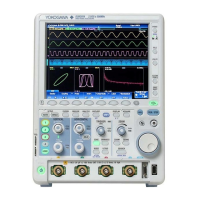
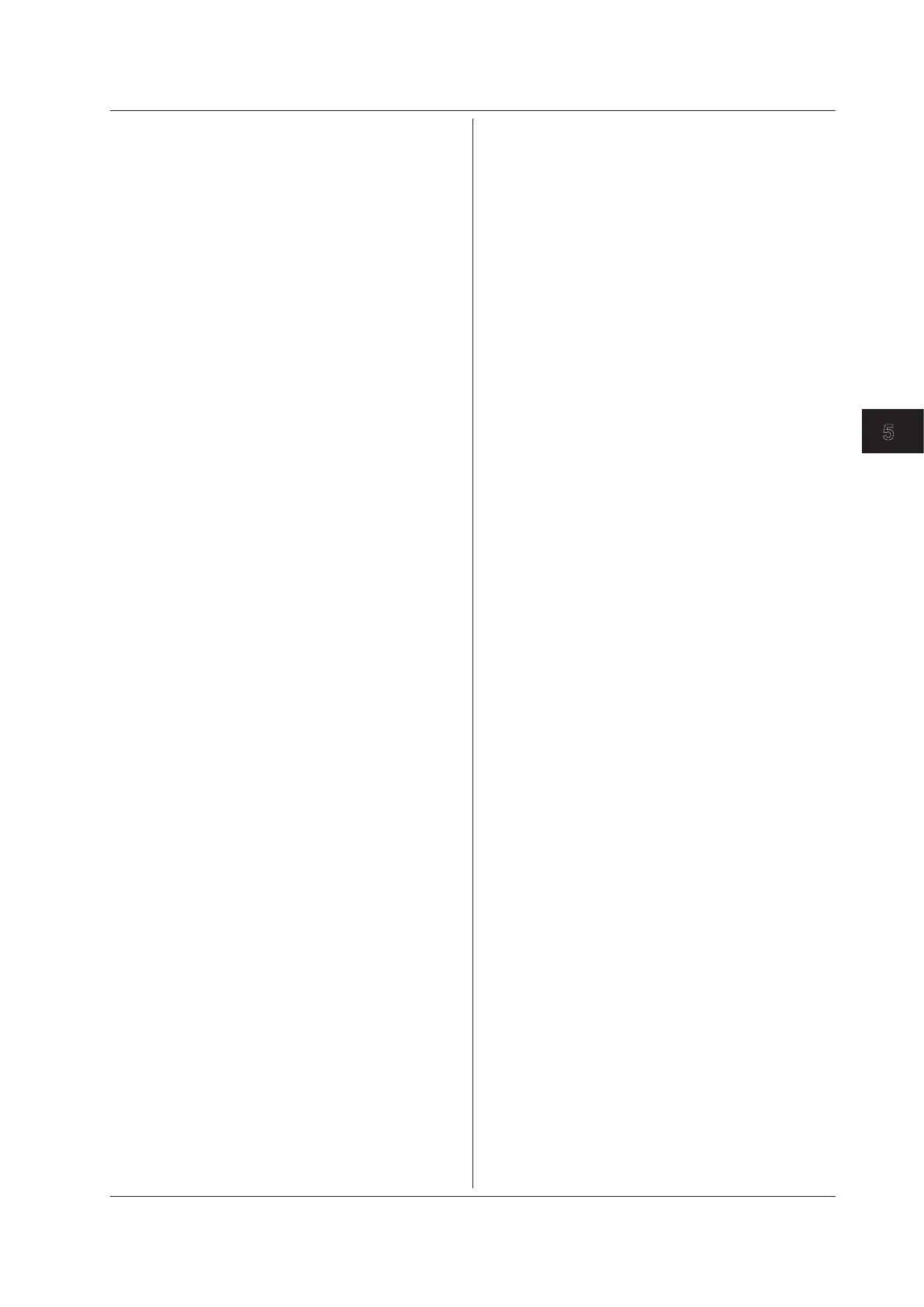